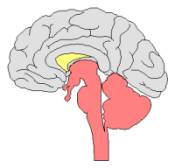VASCULAR.EXPERT
mini-invasives
technics

Marc FITOUSSI M.D
Vascular Surgeon.
18-22 Queen Anne Street
W1G 8HU London
+44 20 7034 3326
VASCULAR.EXPERT

Marc FITOUSSI M.D
Vascular Surgeon.
18-22 Queen Anne Street
W1G 8HU London
+44 20 7034 3326


Disease

ASYMPTOMATIC
Stenosis of the carotid artery can be asymptomatic and discovered during a routine examination.
SYMPTOMATIC Cerebral Vascular Accident (CVA) = stroke
This accident can be transitory and leave no symptom after 24h. However a CVA can also be a lot more dangerous and cause more damages. The clinical symptoms depends on the location and the relevance of the damaged brain area:
Symptoms are :
-Amaurosis : Sudden and painless one-eyed blindness.
It can be total or partial (the patient sees black dots or stains, as opposed to the shiny dots described by patient suffering from hypertension).
It is usually a sign that the homolateral carotid artery is involved.
-Motor disorders (hemiplegia or hemiparesis), and sensory disorders are usually the result of the paralysis of one half of the body, either complete or limited to the upper limbs and/or the face.
These are usually a sign that the controlateral carotid is involved
-Aphasia: loss of speech associated (or not) to a paralysis.
The medical exam also looks for other areas where atherosclerosis might occur:
- Especially the coronary arteries: these lesions are associated with 65% of patients.
- Arteritis of lower limbs.
ADDITONAL EXAMS
Doppler, trans-cranial Doppler , angioscanner, Cerebral scanner, MRI angiography, cerebral MRI
Expression of the results: one speaks about morbi-mortality, ie the cumulated rate of vascular accidents and mortality
THE EVOLUTION OF NON-OPERATED CAROTIDES
- for symptomatic stenosis (TIA or stroke with minor sequelae): incidence of stroke 20% during the 1st year, then 5% per year in the following years (50% at 7 years)
- for tight asymptomatic stenosis: the figures are similar
EVOLUTION OF OPERATED CAROTIDES
The natural history of carotid stenosis has shown that only 15 to 20% of patients with a cerebrovascular accident had one or more transient ischemic attacks prior to this stroke.
Many randomized, prospective, multi-center studies compare medical treatment alone to the medical treatment associated with surgery and involve thousands of patients.
We have the right to propose surgery if the survival of the operated patients is greater than the survival of the nonoperated patients.
- tight symptomatic stenosis:
2 studies, one European and the other American: ESCT (European Carotid Surgery Trialist's Collaborative Group), and NASCET (North American Symptomatic Carotid Endarteriectomy Collaborators).
They find 6 times less stroke and deaths in the surgery group compared to the medical group
- tight asymptomatic stenosis: an American study (Veteran affair cooperativ study group)
She finds 3 times less stroke and death in the surgery group
Postoperative evolution:
Per and post-operative risk: (<1 month): 0 to 4% (half of the accidents are regressive)
- haemodynamic or thromboembolic accidents of the operated carotid (the most frequent)
Long-term risk (> 1 month)
- 10-year stroke recurrence: 5 to 10%
- Mortality at 10 years: 15 to 30% - causes: myocardium (60%), stroke (20%),
- Carotid retenoses: only 2 to 5% of stenoses require reoperation.
Early stenosis is due to myointimal hyperplasia, and late atheroma
Favoring factors are: female sex, small carotids (<5 mm)

VASCULAR.EXPERT
mini-invasives technics
18-22 Queen Anne Street W1G 8HU London
+44 20 7034 3326